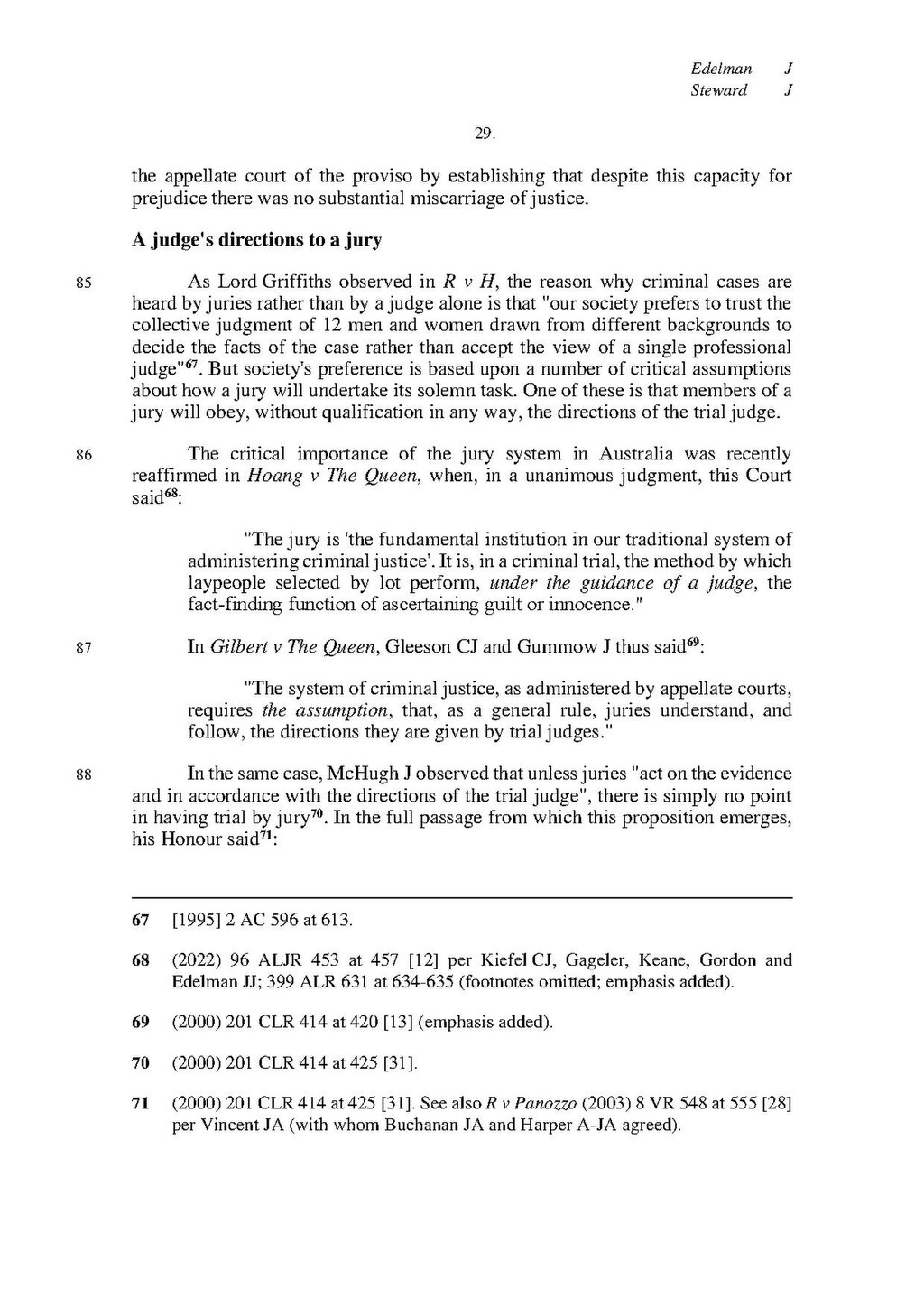Edelman J
Steward J
29.
the appellate court of the proviso by establishing that despite this capacity for prejudice there was no substantial miscarriage of justice.
A judge's directions to a jury
As Lord Griffiths observed in R v H, the reason why criminal cases are heard by juries rather than by a judge alone is that "our society prefers to trust the collective judgment of 12 men and women drawn from different backgrounds to decide the facts of the case rather than accept the view of a single professional judge"[1]. But society's preference is based upon a number of critical assumptions about how a jury will undertake its solemn task. One of these is that members of a jury will obey, without qualification in any way, the directions of the trial judge.
The critical importance of the jury system in Australia was recently reaffirmed in Hoang v The Queen, when, in a unanimous judgment, this Court said[2]:
"The jury is 'the fundamental institution in our traditional system of administering criminal justice'. It is, in a criminal trial, the method by which laypeople selected by lot perform, under the guidance of a judge, the fact‑finding function of ascertaining guilt or innocence."
In Gilbert v The Queen, Gleeson CJ and Gummow J thus said[3]:
"The system of criminal justice, as administered by appellate courts, requires the assumption, that, as a general rule, juries understand, and follow, the directions they are given by trial judges."
In the same case, McHugh J observed that unless juries "act on the evidence and in accordance with the directions of the trial judge", there is simply no point in having trial by jury[4]. In the full passage from which this proposition emerges, his Honour said[5]:
- ↑ [1995] 2 AC 596 at 613.
- ↑ (2022) 96 ALJR 453 at 457 [12] per Kiefel CJ, Gageler, Keane, Gordon and Edelman JJ; 399 ALR 631 at 634–635 (footnotes omitted; emphasis added).
- ↑ (2000) 201 CLR 414 at 420 [13] (emphasis added).
- ↑ (2000) 201 CLR 414 at 425 [31].
- ↑ (2000) 201 CLR 414 at 425 [31]. See also R v Panozzo (2003) 8 VR 548 at 555 [28] per Vincent JA (with whom Buchanan JA and Harper A-JA agreed).
